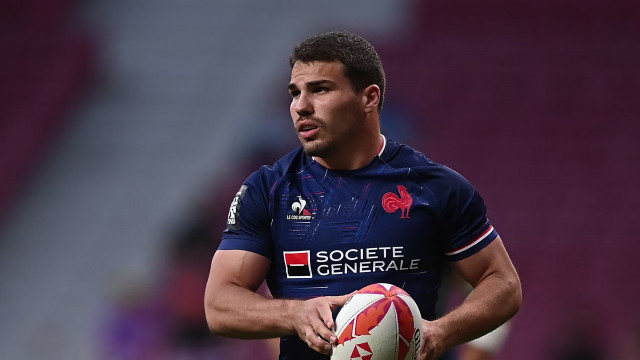Olympic rugby sevens: origins and differences
The fast-paced game, featuring seven players per team, emphasizes speed and athleticism

France and Toulouse captain Antoine Dupont, one of the biggest names in world rugby union, will turn out for France at the Paris Olympics.
The abbreviated version of the game guarantees high-octane action during which players can be far more easily exposed than in the traditional format.
AFP Sport looks at the main difference -- and similarities -- between the two versions of rugby union.
Rugby sevens originated in Melrose, Scotland, in 1883 when a pair of butchers launched a fund-raising tournament. It is still played annually.
The popularity of rugby sevens spread, but really took off with the development of the Hong Kong Sevens in the 1970s.
The sport was included in the Commonwealth Games for the first time in 1998 while the Rugby World Cup Sevens, the quadrennial world championship of rugby sevens, was first held for men in 1993, and women in 2009.
The men compete for the Melrose Cup, named after the aforementioned Scottish Borders town.
Under the auspices of World Rugby, the annual World Rugby Sevens Series for men was launched in 1999, the women getting their own series in 2012.
Last season's model saw the Series run from December to June, with men's and women's competition aligned on the same weekends in the same cities and venues with the idea to create a festival atmosphere.
The new format showcased the 12 best men's and women's teams and concluded in a Grand Final weekend where the top eight teams competed to be crowned Series champions. A Dupont-led France beat Argentina for victory in the men's competition while Australia won the women's final.
The 15-a-side version of rugby union was last played at the 1924 Olympics in Paris, the United States beating the host nation for gold. The game returned for the 2016 Rio Olympics, but in the sevens format.
Fiji's men and the Australian women won in the Brazilian capital. At the Covid-delayed Tokyo Games five years later, it was again Fiji who topped the men's competition while New Zealand's women were crowned champions after victory over France.
Fundamental rules remain the same: it's five points for a try, two for a conversion and three for a penalty. The ball still has to be passed backwards and dotted down behind the goal line for a try. Three-man scrums and lineouts are also part of play.
The size of the pitch is the same for both disciplines (70x100m), but there are seven players per team instead of 15 and playing time is adapted accordingly: each half is seven minutes instead of the 40 minutes in the 15-a-side code.
In rugby sevens, penalties and conversions are not kicked from the ground using a tee but as drop goals.
Rugby sevens demands speed and reactivity, a level of athleticism that sees attacking play often go the length of the pitch. Defensively, players need to be able to tackle well and also play for turnovers, an immensely wearing task.
There is little room for error, notably in defence. There is a raft of XVs players who shone on the sevens circuit, but that is less so the case nowadays with sevens specialists much more adept at the game.
New Zealand included Sonny Bill Williams in 2016, Dupont will don the French shirt on home soil, but the likes of Springbok winger Bryan Habana and former Australia skipper Michael Hooper failed in their bids to make the cut.
The priority in sevens is usually to keep the ball, vastly different from XVs which often features a tactical kicking strategy.
In recent years, there has been a lot less contact avoidance in sevens as most teams have drastically improved defences out wide. Instead, teams seek to take contact on their own terms in a bid to draw in defending players and open up gaps.



















COMMENTS
Comments are moderated and generally will be posted if they are on-topic and not abusive.
For more information, please see our Comments FAQ